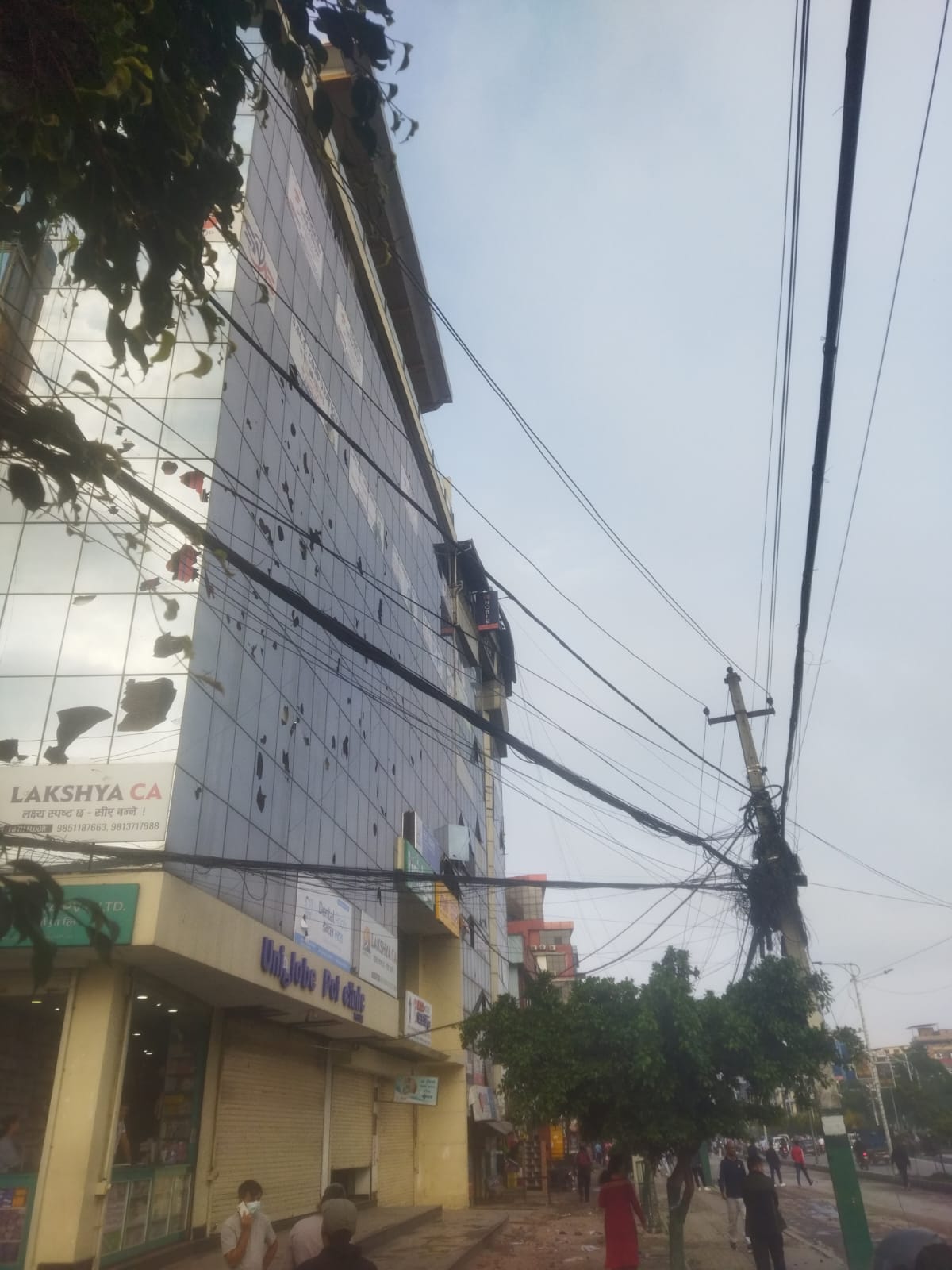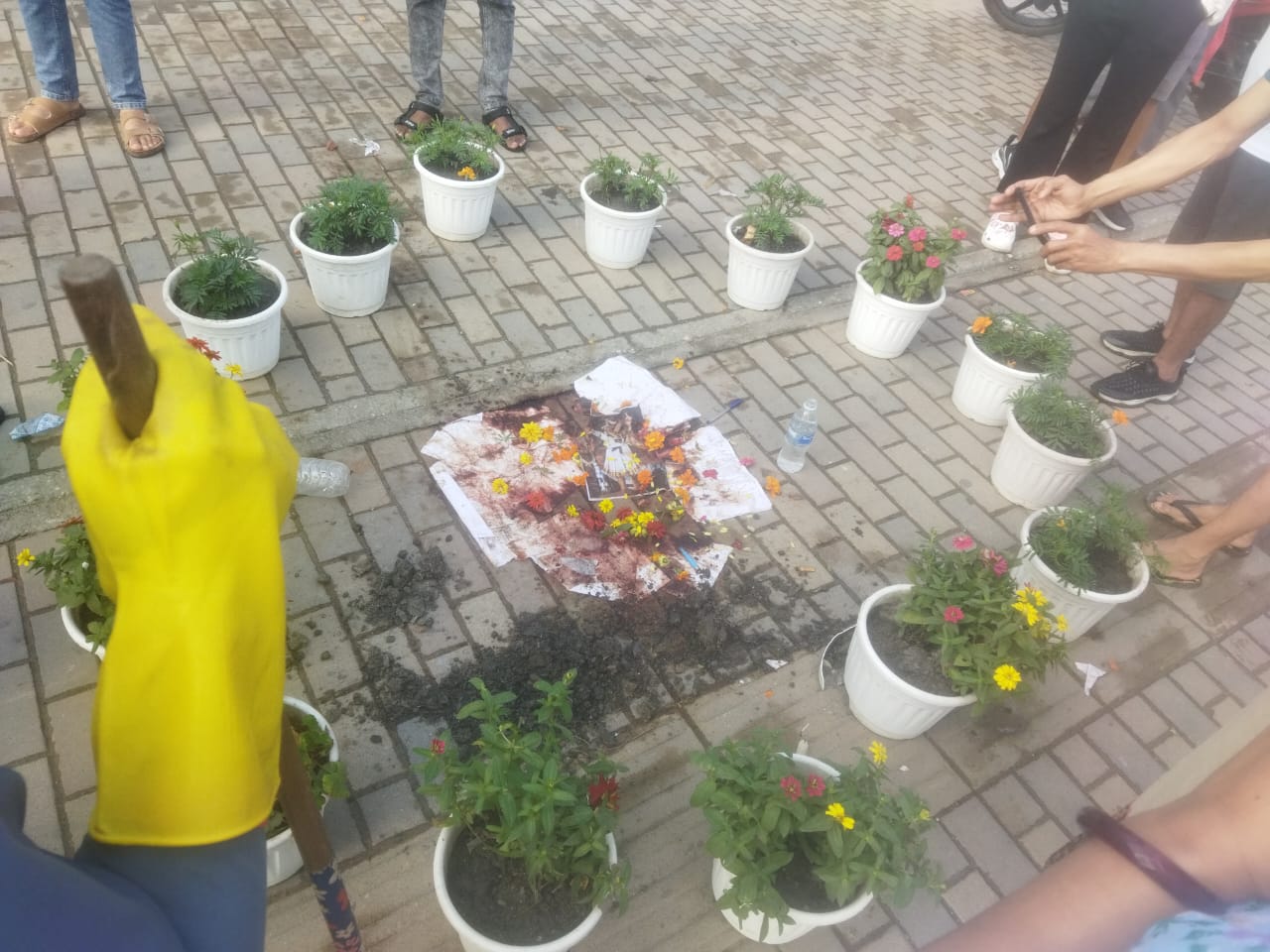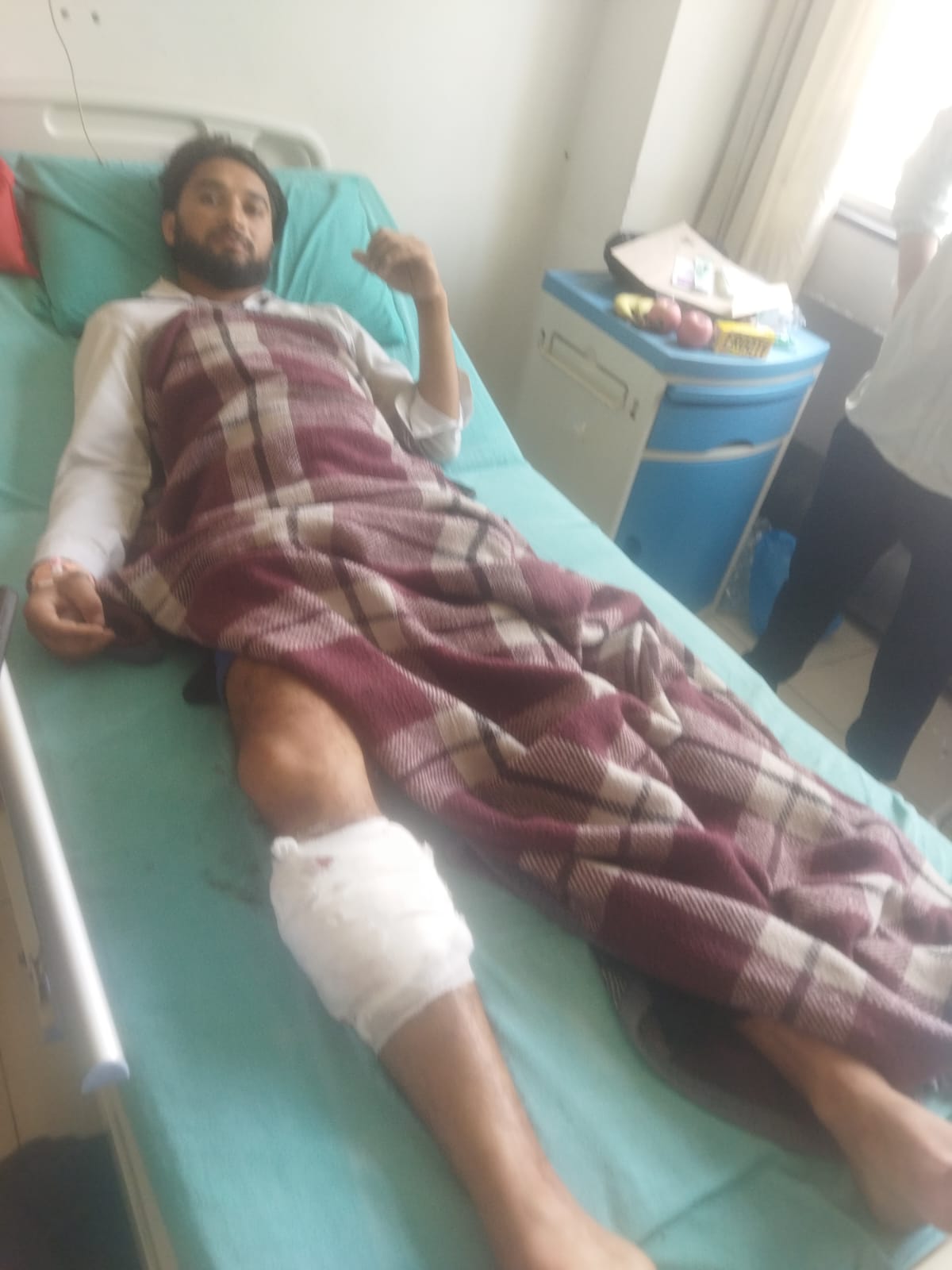Reporter's diary of 8-9 September
Journalist had to chant slogans against the prime minister to save himself during Nepal protests7:30pm Tuesday, 9 September.
I was driving my daughter back from a relative’s house in Baneswar where she had taken refuge after a curfew was declared the previous day while she was in school. She was riding pillion on the back of my moped.
We drove past Parliament where 19 people had been killed by police the previous day. We passed Thapathali, where the Kantipur highrise was on fire. The sky had gone dark, and the stinging smoke made it hard to breathe.
A gas cylinder exploded, and the crowd dispersed briefly. The blast provided a moment to escape the raging mob. By myself I may not have been so scared, but my daughter’s safety made me more afraid. I had never been this frightened in my journalism career, even while covering the Maoist insurgency 20 years ago.
At the Tripureswor intersection there were more angry crowds. The further we got from the epicentre of the GenZ demonstration, the more elderly the protesters looked. Many were muscular gentlemen with tattooed arms.
Prime Minister K P Oli had just resigned, but the crowd was still chanting “के पी चोर, देश छोड”.
Soon, we were surrounded by an enraged mob. My survival instinct took over, and I started shouting “के पी चोर” and my plucky daughter screamed from behind “देश छोड”. Father and daughter waved at the protesters, and gave them a thumbs up. We finally got home, scared and smelling of burning rubber and smoke.

ARSON AND LOOTING
I was born in the remote mountains of western Nepal in Rukum, the district that was the stronghold of the Maoist guerrillas after they launched an armed struggle in 1996.
I moved to Kathmandu for higher studies, and as a student witnessed the popular uprising of 2006 against Gyanendra’s absolute monarchy. I have covered violence and chaos. I have been caught in the crossfire between the rebels and state security. I covered the violent street protests of the 2006 People’s Movement that ended the war, the Madhes movement and the Indian blockade of 2015.
But never was I more scared than during the 30-minute drive home through the city with my daughter at the back of my moped.
Last month’s protests were initially led by youth groups which had loosely banded together as GenZ to protest corruption and impunity. On 8 September, I drove to the Mandala in my trusty moped to cover the rally, some protesters were in school uniform. There was singing and chanting.
Just before noon, a slightly older group of protesters peeled off from the sit-in in front of Everest Hotel, broke through the half-hearted police cordon and moved towards the intersection outside Parliament. Most of the original young demonstrators remained at the sit-in, while the grownup protesters who were clearly not a part of the GenZ, started to break the perimeter wall of the Parliament complex.
The young protesters looked a bit confused about what to do next as they also neared the Parliament gates. Violence was not a part of their plan, and the infiltration had begun in earnest.
A group of organised older rioters broke through the western wall, even as police were concentrated along the main south gate. These agitators seemed focused on a single mission: to burn down the Parliament building, and they went about it purposefully.

Too late, the police used water cannons to disperse those by the south gate. I went closer, my press card dangling from my neck. A tear gas canister whizzed past my head. I was not able to see clearly, and backed away to safety.
The police opened fire at point blank range, killing 19 protesters. Hundreds of injured were carried to the nearby Civil Hospital. There are many video clips on social media of task force police kneeling, taking aim with SLR rifles and shooting, they show protesters being hit and falling.
The riot police fled, and the Armed Police Force and Nepal Army soldiers came out, but remained close to the trucks that had transported them to the intersection. Seeing that the security forces were not stopping them, the crowd then went on an arson rampage — it became a free-for-all as government buildings were set on fire one after another.
Most of the arsonists were not GenZ, they were in the mid-30s, and I heard many shouting slogans for the restoration of the monarchy. Others were there simply to vandalise and loot.
After having chased the police away from the Parliament building, they posted pictures and videos, having the run of the premises, instigating new arrivals to continue with the arson, and also brandishing looted automatic weapons.
A curfew was declared, but this did not stop the rampage throughout that evening and into the night. Unable to return home, I spent the night in a friend’s office, and returned to the Parliament area the next morning. The black asphalt was dyed red with blood. Shoes, slippers and pieces of clothing littered the street.
The next day, 9 September the much-feared and expected revenge attacks ignited. There was hope that the Army would be able to protect government buildings and provide public security, but the arson, vandalism and looting went unchecked — even when the seats of government were set on fire.
The military did make an appearance, but only after 10pm to enforce the curfew, but by then the mob had already gone home.

That was the moment I asked myself: Where have the students gone? Has the GenZ movement been hijacked? I could not see any of the GenZ-ers anywhere on 9 September.
It was around midday of 9 September that millennials, including from groups like Hami Nepal came forward to the media, claiming to speak for the GenZ. They claimed to have led the protests. Others claiming to be GenZ said they were for the restoration of the monarchy, but they did not look the age.
Mobs were out of control, burning down the prime minister’s office, the Supreme Court, the CIAA and the official and private residences of ministers. Within 27 hours Nepal became a country without a government, and leaders without homes. Important official documents went up in flames with the buildings that housed them.
PM Oli resigned, too late to save the day. The Army occupied itself airlifting ministers from their official residences. Former prime minister Sher Bahadur Deuba and his wife foreign minister Arzu Rana Deuba were dragged out, beaten up and their home set on fire. They were rescued and taken to an army base.
It became hard to tell over the next few days if the Army was providing them security, or keeping them incommunicado in detention. The Army was negotiating with GenZ as well as pro-monarchists at its headquarters, but moved the talks to President Ram Chandra Paudel’s office on 11 September.
Former chief justice Sushila Karki was nominated interim head of government by GenZ delegates voting on Discord, and mandated to hold elections on 5 March.
Will that happen? Things are too fluid at the moment. And my mind is still reeling from the fear and panic of that moped ride with my daughter through rampaging mobs. Did all that really happen in front of my eyes, or was it just a nightmare?
Bhadra Sharma is a reporter for The New York Times based in Kathmandu.




